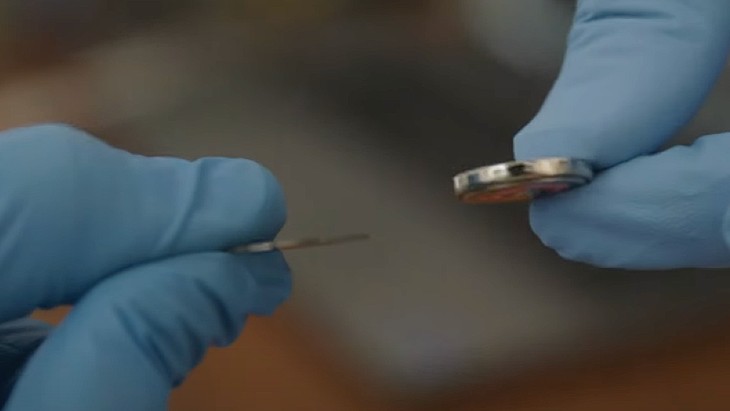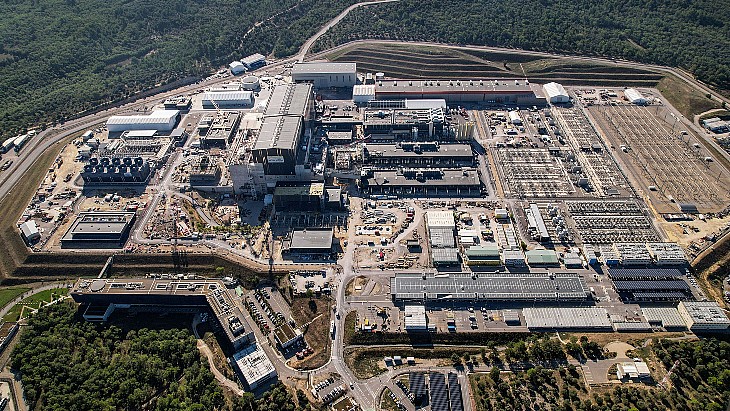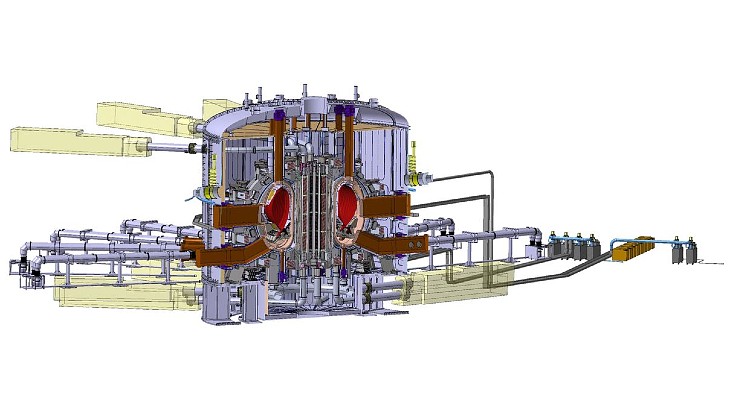Production of ITER poloidal field coils completed
.jpg)
Six poloidal field coils will be positioned horizontally around the ITER vacuum vessel and D-shaped toroidal field coils to help shape the plasma and keep it in suspension away from the walls.
Fusion for Energy, the European Domestic Agency for ITER, is responsible for procuring the five largest ring-shaped superconducting magnets.
The smaller PF1 coil - measuring 9 metres in diameter and weighing 200 tonnes - was produced by Russia under a contract signed in 2011. It was delivered to the ITER site in February this year.
The PF6 coil - weighing 350 tonnes and having an external diameter of about 11.2 metres - was manufactured by the Institute of Plasma Physics of the Chinese Academy of Sciences, a member of the TAC1 consortium. The PF6 coil is the heaviest of ITER's superconducting magnets. PF6 is the bottom-most of the six circular magnets surrounding ITER's vacuum chamber and the first one to be inserted in the tokamak pit.
Installation of the PF6 coil was completed in April by TAC1, a China-France consortium that is led by China National Nuclear Corporation subsidiary China Nuclear Power Engineering.
The four other coils - PF2, PF3, PF4 and PF5 - have been produced by Europe at the Cadarache site. Ranging in diameter from 17 to 24 metres and weighing 200 to 400 tonnes, these coils are too big to be manufactured off site and shipped to ITER.
In April 2021, the first European-made coil, PF5, successfully completed all manufacturing and testing and was removed from the facility and stored until its installation in September 2021. A third and fourth completed coil - PF2 and PF4 - have also been completed and put into storage.
The final coil, PF3, has now been completed and moved into the storage along with the other coils awaiting installation.
"The fabrication of PF3 - one of the two largest ring-shaped coils, measuring 24 metres in diameter - marked the high point of technical and organisational expertise that had been accumulated since manufacturing began in the Winding Facility in late March 2017," the ITER Organization said. "The first coil to come off the production line in 2021 (PF5) had required three and half years of work. Although 30% larger and wound with 20% more superconducting cable, PF3 was finalised in two years and 9 months - a 15-month gain in fabrication time."
ITER is a major international project to build a tokamak fusion device in Cadarache, France, designed to prove the feasibility of fusion as a large-scale and carbon-free source of energy. The goal of ITER is to operate at 500 MW (for at least 400 seconds continuously) with 50 MW of plasma heating power input. It appears that an additional 300 MWe of electricity input may be required in operation. No electricity will be generated at ITER.
Thirty-five nations are collaborating to build ITER - the European Union (including the UK) is contributing almost half of the cost of its construction, while the other six members (China, India, Japan, South Korea, Russia and the USA) are contributing equally to the rest. Construction began in 2010 and the original 2018 first plasma target date was put back to 2025 by the ITER council in 2016, but is currently in the process of being revised again.



_70828.jpg)





_88592.jpg)
_66488.jpg)

